Chris Clegg
Towards the Development of a Simulator for Investigating the Impact of People Management Practices on Retail Performance
Jun 21, 2010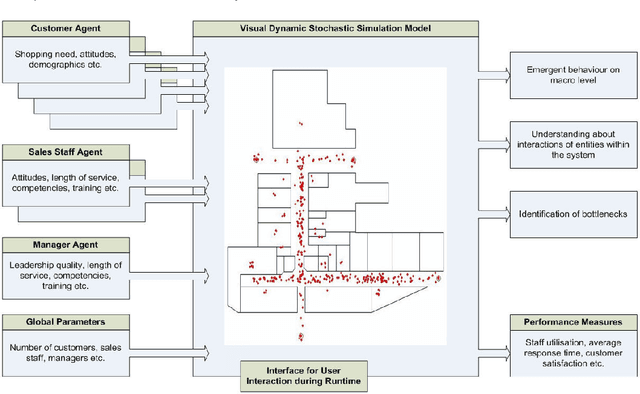

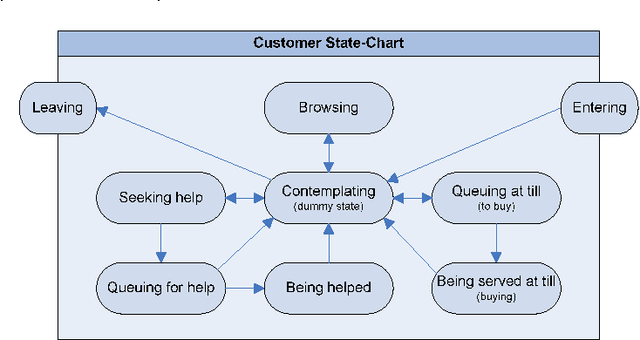

Abstract:Often models for understanding the impact of management practices on retail performance are developed under the assumption of stability, equilibrium and linearity, whereas retail operations are considered in reality to be dynamic, non-linear and complex. Alternatively, discrete event and agent-based modelling are approaches that allow the development of simulation models of heterogeneous non-equilibrium systems for testing out different scenarios. When developing simulation models one has to abstract and simplify from the real world, which means that one has to try and capture the 'essence' of the system required for developing a representation of the mechanisms that drive the progression in the real system. Simulation models can be developed at different levels of abstraction. To know the appropriate level of abstraction for a specific application is often more of an art than a science. We have developed a retail branch simulation model to investigate which level of model accuracy is required for such a model to obtain meaningful results for practitioners.
Multi-Agent Simulation and Management Practices
Mar 19, 2010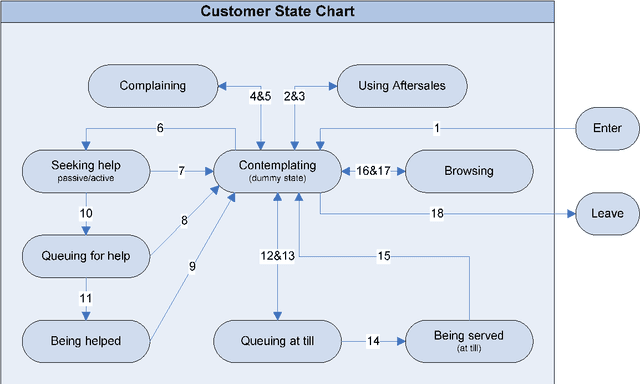
Abstract:Intelligent agents offer a new and exciting way of understanding the world of work. Agent-Based Simulation (ABS), one way of using intelligent agents, carries great potential for progressing our understanding of management practices and how they link to retail performance. We have developed simulation models based on research by a multi-disciplinary team of economists, work psychologists and computer scientists. We will discuss our experiences of implementing these concepts working with a well-known retail department store. There is no doubt that management practices are linked to the performance of an organisation (Reynolds et al., 2005; Wall & Wood, 2005). Best practices have been developed, but when it comes down to the actual application of these guidelines considerable ambiguity remains regarding their effectiveness within particular contexts (Siebers et al., forthcoming a). Most Operational Research (OR) methods can only be used as analysis tools once management practices have been implemented. Often they are not very useful for giving answers to speculative 'what-if' questions, particularly when one is interested in the development of the system over time rather than just the state of the system at a certain point in time. Simulation can be used to analyse the operation of dynamic and stochastic systems. ABS is particularly useful when complex interactions between system entities exist, such as autonomous decision making or negotiation. In an ABS model the researcher explicitly describes the decision process of simulated actors at the micro level. Structures emerge at the macro level as a result of the actions of the agents and their interactions with other agents and the environment. 3 We will show how ABS experiments can deal with testing and optimising management practices such as training, empowerment or teamwork. Hence, questions such as "will staff setting their own break times improve performance?" can be investigated.
* 19 pages, 3 figures, Encyclopedia of Decision Making and Decision Support Technologies
Modelling and simulating retail management practices: a first approach
Mar 19, 2010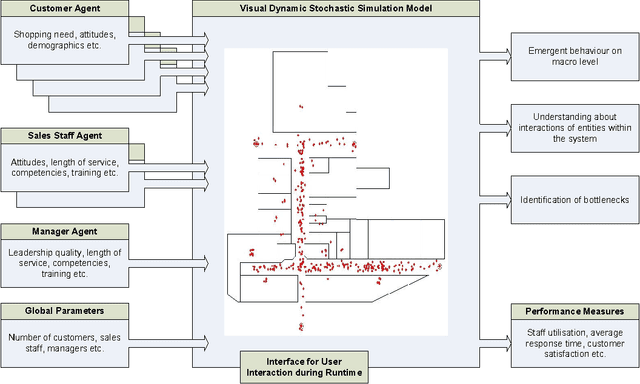

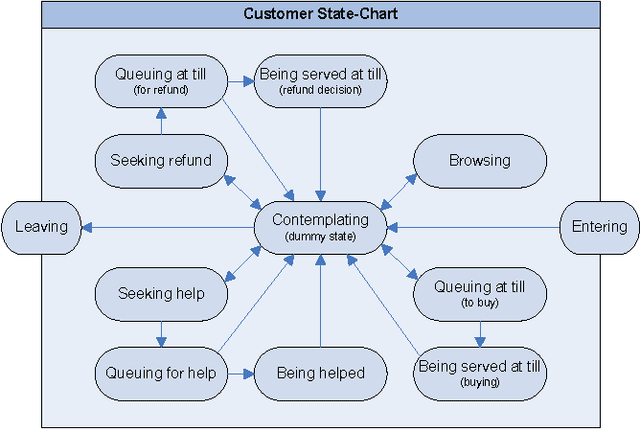

Abstract:Multi-agent systems offer a new and exciting way of understanding the world of work. We apply agent-based modeling and simulation to investigate a set of problems in a retail context. Specifically, we are working to understand the relationship between people management practices on the shop-floor and retail performance. Despite the fact we are working within a relatively novel and complex domain, it is clear that using an agent-based approach offers great potential for improving organizational capabilities in the future. Our multi-disciplinary research team has worked closely with one of the UK's top ten retailers to collect data and build an understanding of shop-floor operations and the key actors in a department (customers, staff, and managers). Based on this case study we have built and tested our first version of a retail branch agent-based simulation model where we have focused on how we can simulate the effects of people management practices on customer satisfaction and sales. In our experiments we have looked at employee development and cashier empowerment as two examples of shop floor management practices. In this paper we describe the underlying conceptual ideas and the features of our simulation model. We present a selection of experiments we have conducted in order to validate our simulation model and to show its potential for answering "what-if" questions in a retail context. We also introduce a novel performance measure which we have created to quantify customers' satisfaction with service, based on their individual shopping experiences.
* 33 pages, INFORMS Simulation Society Workshop,
 Add to Chrome
Add to Chrome Add to Firefox
Add to Firefox Add to Edge
Add to Edge